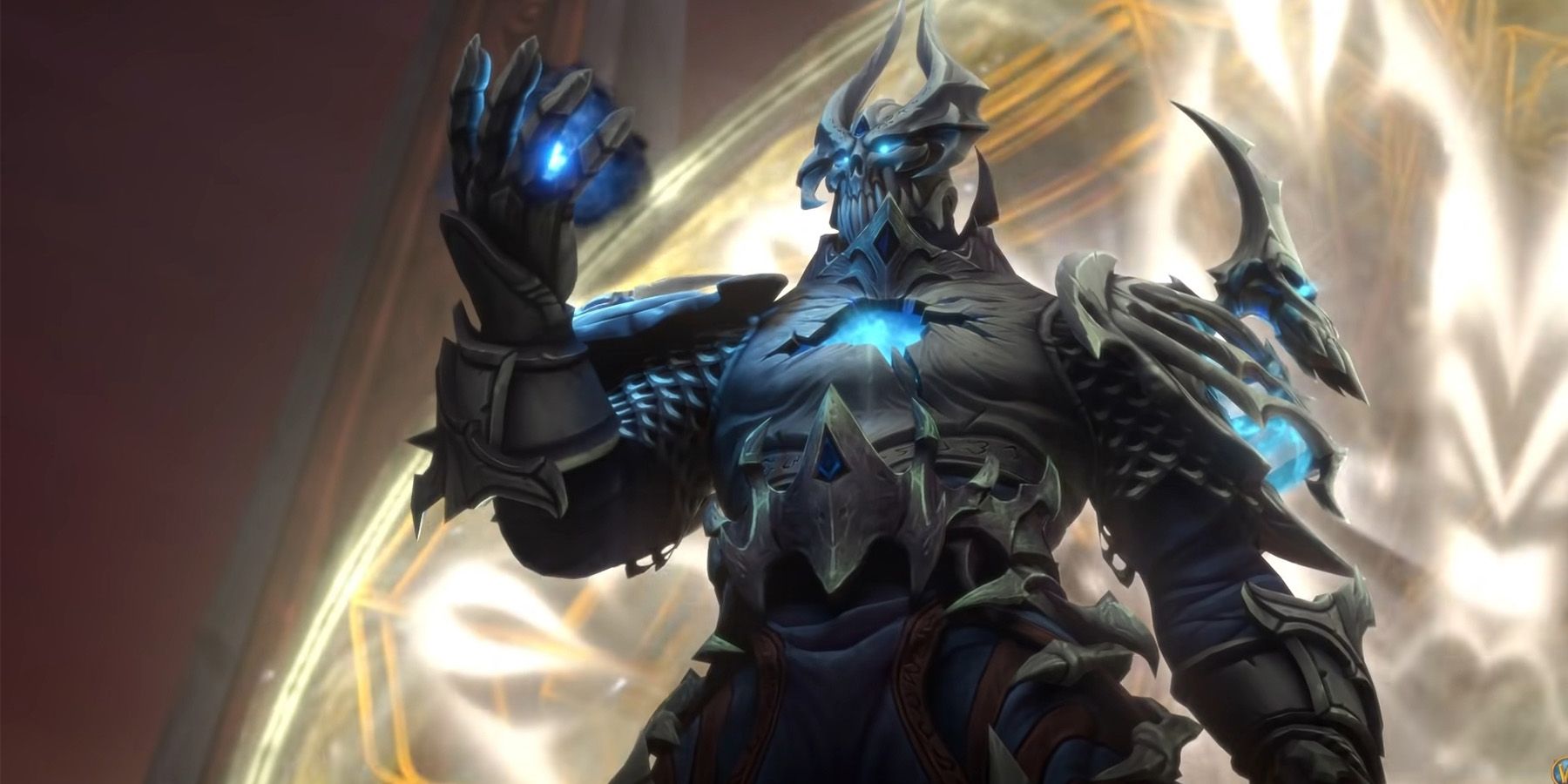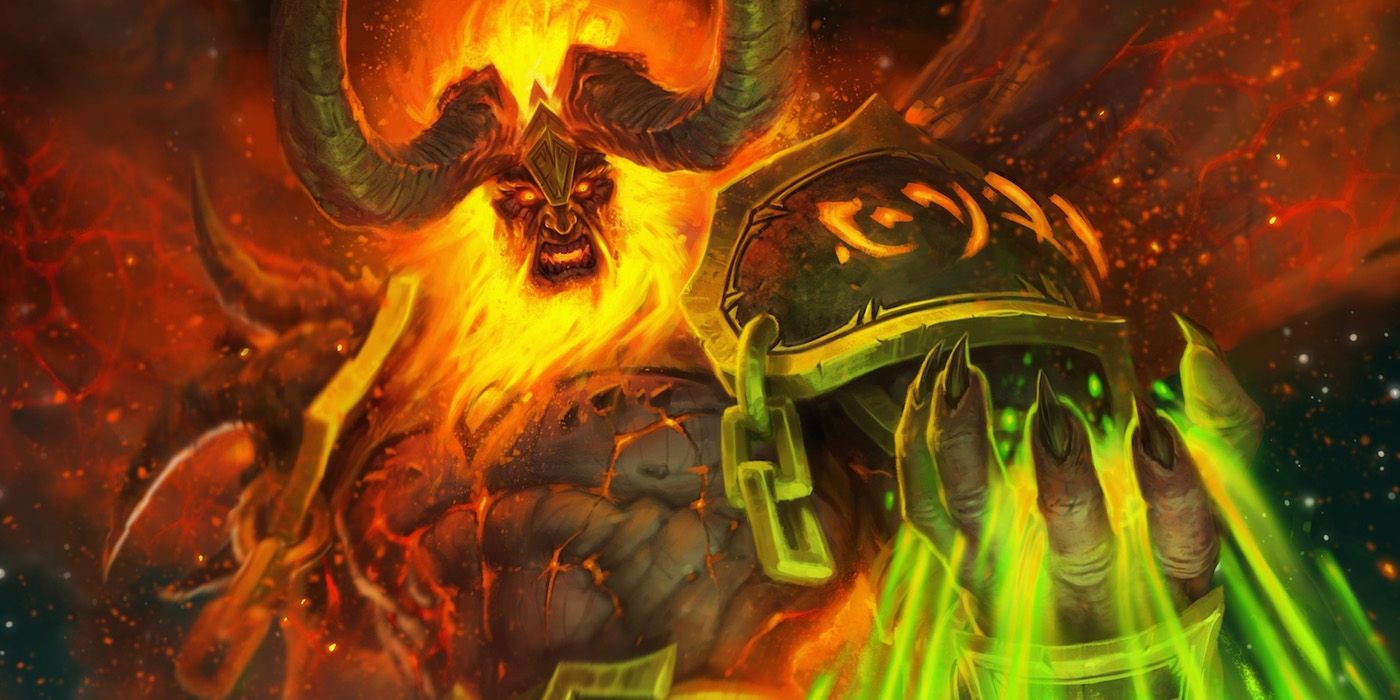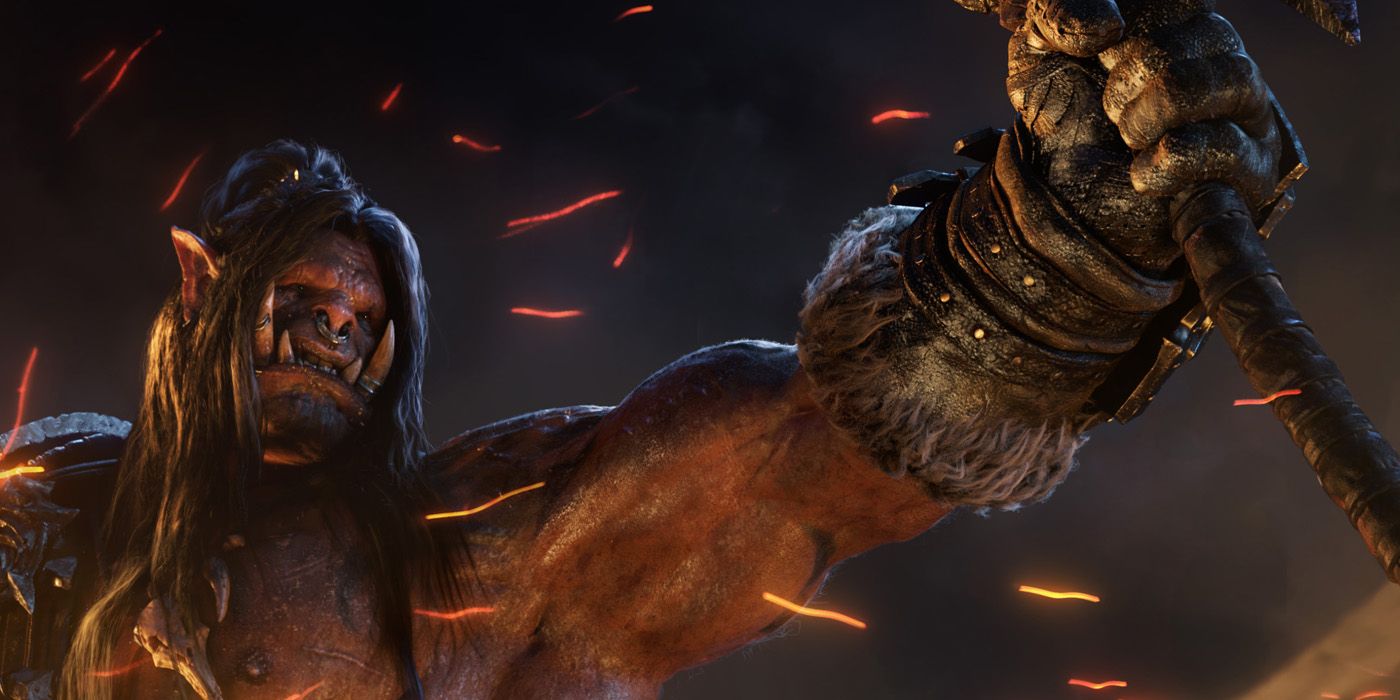World of Warcraft players have finally defeated The Jailer and brought peace to the Shadowlands in the latest raid, The Sepulcher of the First Ones. As The Jailer died, he declared that the cosmos would not be ready for what is to come. His entire plan, his entire reason for existing, was to reshape reality with him in charge so that he could save everyone. While this is a noble and flawed mission, it is not the first time that a World of Warcraft villain has had this goal.
Almost every World of Warcraft expansion begins with the introduction of a big bad villain or a world-ending crisis. Players then fight back against this new evil over a couple of years of updates and content. It always climaxes with the players confronting this big bad, killing them, and then a cutscene plays where the big bad has their final monologue and the next bad is teased. As World of Warcraft gets more expansions, it also gets more big bads, but each villain seems to have the same motivations as the last and that creates a storytelling problem.
World of Warcraft's History of Big Villains
World of Warcraft villains tend to fall into two distinct categories of evil; they either want to gain as much power as possible or they want to control everything so that they can defend reality against an even bigger villain. While some choose to just cause chaos, the majority of the main villains fall into those two categories. As more expansions are released, it seems more of the villains land in the second category.
In The Burning Crusade and Legion, players have to combat against The Burning Legion, an army of demons led by the mad titan Sargeras. For multiple expansions, Sargeras was the looming threat, the great villain of reality that the players would have to one day face, which they did in Legion. His mission was to destroy all world-souls and life in the universe. He did not set out on this mission simply because he wanted to sow chaos but because he wanted to prepare for the eventual arrival of the Void Lords. He wanted to stop the Old Gods and the Void Lords from accomplishing their mission, and to do that he would have to extinguish life in the universe.
Also in The Burning Legion, players have to fight Illidan Stormrage, the demon hunter who has vowed to stop The Burning Legion. To do this, he creates his own army and makes himself the lord of Outland. He believes that he is the only one that can stop The Burning Legion and everyone should listen to him, either willingly or by force.
In Wrath of the Lich King, Arthas Menethil served as the big bad of the expansion as he reigned destruction across Azeroth with his undead scourge. His goal was to unite Azeroth under his rule, but he specifically wanted to unite them in death. He wanted to unite Azeroth so that they would be ready to face The Burning Legion when they returned in Legion. He felt like the only way to accomplish that was to kill everyone and raise them as an undead army. While his target was not the Void Lords, he had a very similar motivation to Sargeras.
In Battle for Azeroth, the Old God N'Zoth served as the final raid boss. He wanted to rebuild his empire and conquer Azeroth, but he did not want to do it simply because he wanted power. He wanted to take over Azeroth so that he could defend against a bigger bad that was coming. Now in Shadowlands, The Jailer has finally revealed his mission as he died: he wanted to unite a broken cosmos against what is to come. That is five World of Warcraft villains all with the same exact goal, protecting the world from a bigger bad that then wants to protect the world from a bigger bad.
World of Warcraft Villains Need to Change
The motivations that Blizzard gives these large overarching villains are the same thing almost every time, so Blizzard needs to create more intriguing villains. It was interesting when Blizzard did it with Arthas, and it even worked with Sargeras, as they had existed since the Warcraft RTS games. But it is only worth repeating so much. Blizzard can create iconic villains, characters, and lands; it just needs to break away from its current storytelling trope.
World of Warcraft has some villains that do not fall into this category, but they are few and far between. Deathwing just wanted to sow chaos and get revenge, Garrosh Hellscream wanted to rule the Horde and gain immense power, and Sylvanas Windrunner wanted to secure a future for the Forsaken and unmake the cycle of death. Most of these characters worked because their motivations were different from the rest of the big bads; Sylvanas' storyline was an exception as many players felt like her motivations did not make sense and did not line up with her character. However, Garrosh was very well received by the community, and he even has some loyal followers across social media platforms.
For the next big expansion villain, Blizzard needs to give the villain a more intriguing motivation. The Jailer fell flat for many players because his motivations were not made clear until the very end, and when they were expanded upon, it turned out he was just seeking to do the exact same thing as the last villain. If Blizzard wants players to care about the big villain, then it needs to differentiate them from every villain that came before.
World of Warcraft is preparing to release its ninth expansion, and as of now, players have zero idea what it will contain. For the next big bad, Blizzard needs to come up with some new motivation, or else it could fall flat.
World of Warcraft is available now on PC.



